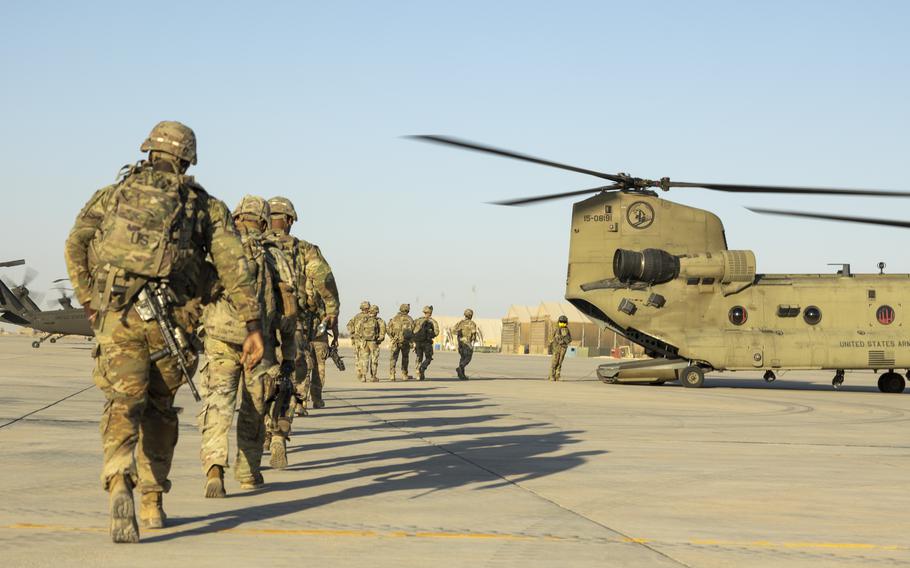
Georgia Army National Guard soldiers enter a CH-47 Chinook helicopter during a training mission in western Iraq on Oct. 30, 2024. They are part of a coalition to prevent a resurgence of the Islamic State group in Iraq and Syria. U.S. forces have repeatedly come under attack by militants in the two countries over the past year. (Tyler Becker/U.S. Army)
U.S. forces are fighting Iranian-backed proxies in Syria frequently as they come under militant attacks that analysts say have been aided by the Syrian government.
Dozens of those rocket, missile and drone attacks have focused on a strategic American base at a gas field in northeastern Syria near the Iraq border, a de facto territorial dividing point between forces backed by Iran and the U.S.-led coalition to defeat the Islamic State group.
Mission Support Site Conoco has been attacked about 40 times since October 2023, U.S. Central Command said in a statement this month.
Many of those attacks have taken place in recent months, after U.S. and Iraqi officials announced the withdrawal of American forces from Iraq and in the aftermath of Israel’s campaign against Hezbollah in Lebanon.
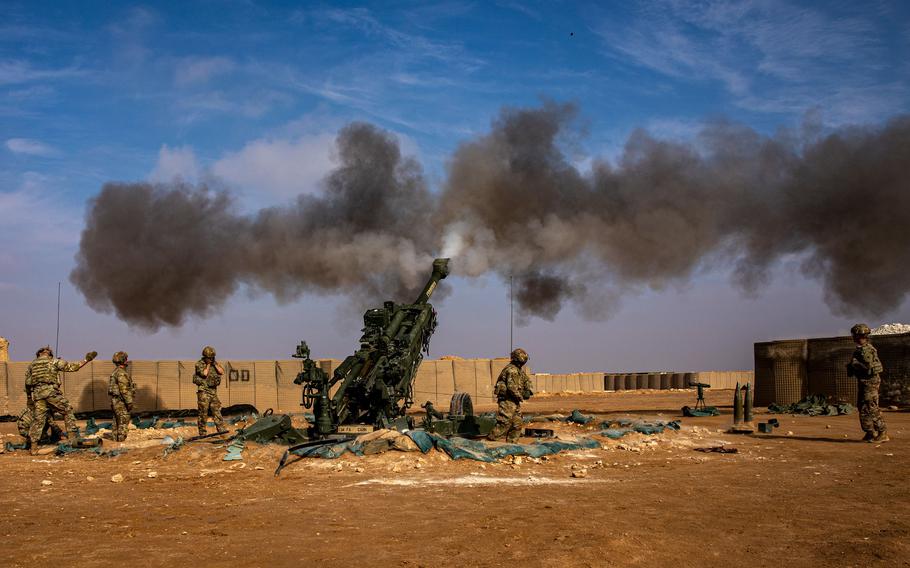
Soldiers assigned to the 37th Infantry Brigade of the Ohio Army National Guard fire an M777 howitzer during an exercise at Mission Support Site Conoco in Syria in December 2022. Conoco has been attacked about 40 times since October 2023, U.S. Central Command said. (Julio Hernandez/U.S. Army)
Conoco, a dusty outpost about 5 miles from an airfield controlled by the Syrian regime, has become the front line for an Iranian proxy attempt to pressure U.S. forces to leave Syria altogether, said Charles Lister, the director of Syria and Countering Terrorism and Extremism programs at the Middle East Institute.
Some of the attacks appear to be directly facilitated by the Syrian regime, said Lister, citing unidentified official U.S. sources.
The U.S. has repeatedly hit back with artillery strikes, mostly targeting Iranian proxies. But it’s also struck Syrian government positions, Lister said.
“We’re not just looking at war in Gaza, we’re not just looking at war in Lebanon, but the U.S. is actually fully engaged in a hot conflict right now, involving Iranian proxies and the Syrian regime in eastern Syria,” Lister said.
On Friday, the Pentagon said U.S. forces had been attacked 125 times in Syria and 79 times in Iraq since October 2023, according to Reuters.
CENTCOM did not respond to earlier Stars and Stripes questions about how frequently the U.S. was responding to militant attacks and whether Syrian government locations were among those being targeted by American artillery fire or other retaliatory strikes.
Although groups linked to Syrian President Bashar Assad’s government attacked U.S. forces over the past year, the regime didn’t take a very active role, said Renad Mansour, a senior research fellow and director of the Iraq Initiative at the London-based think tank Chatham House.
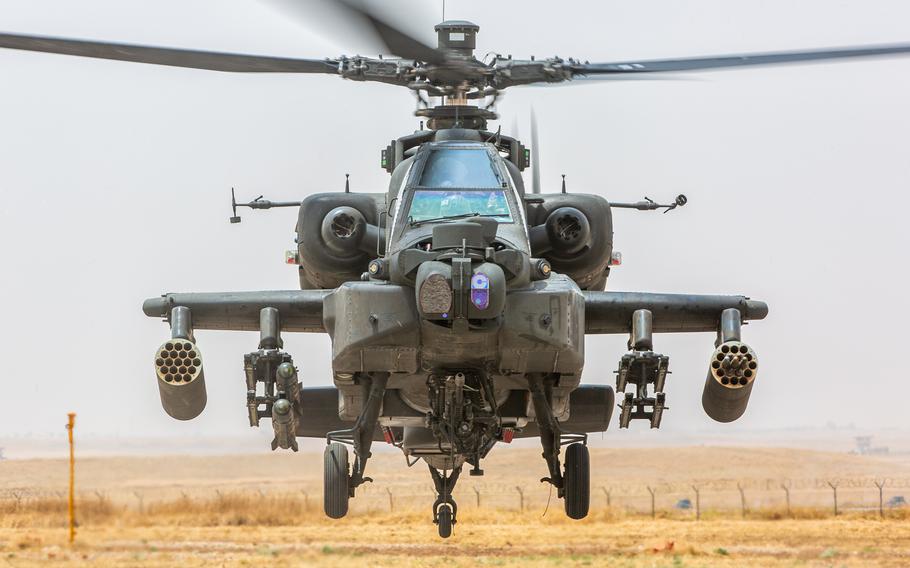
An AH-64D Apache Longbow attack helicopter takes off for a mission in July 2024 at Irbil Air Base in Iraq. U.S. forces are part of a coalition to prevent a resurgence of the Islamic State group in Iraq and Syria. American service members have repeatedly come under attack by militants in the two countries over the past year. (Joseph Kumza/U.S. Army)
But the Syrian government and other groups could be changing their thinking “as it becomes clear that are just no red lines for Israel from their perspective, and that they are also at war, and Israel will attack the Syrian regime,” Mansour said.
A U.S.-led coalition in Iraq and Syria is working to prevent a resurgence of ISIS. About 900 U.S. service members and an undisclosed number of contractors are operating in Syria, where they support local Kurdish forces.
An additional 2,500 American military forces are in Iraq, the Defense Department said in September. That same month, the White House announced an agreement with Iraq to wrap up the U.S. military mission there next year, though it didn’t specify whether the agreement would mean a full troop withdrawal.
Some of those attacks in Iraq and Syria over the past year have killed or seriously injured American military personnel. Eight U.S. service members suffered traumatic brain injuries and smoke inhalation from an Aug. 9 militant drone attack at Rumalyn Landing Zone in northeastern Syria.
Days earlier, four U.S. troops and a defense contractor were injured in a rocket attack Aug. 5 at al Asad Air Base in Iraq.
And three soldiers were killed and dozens more injured in a one-way drone attack at an American outpost in Jordan just across the Syrian border on Jan. 28.
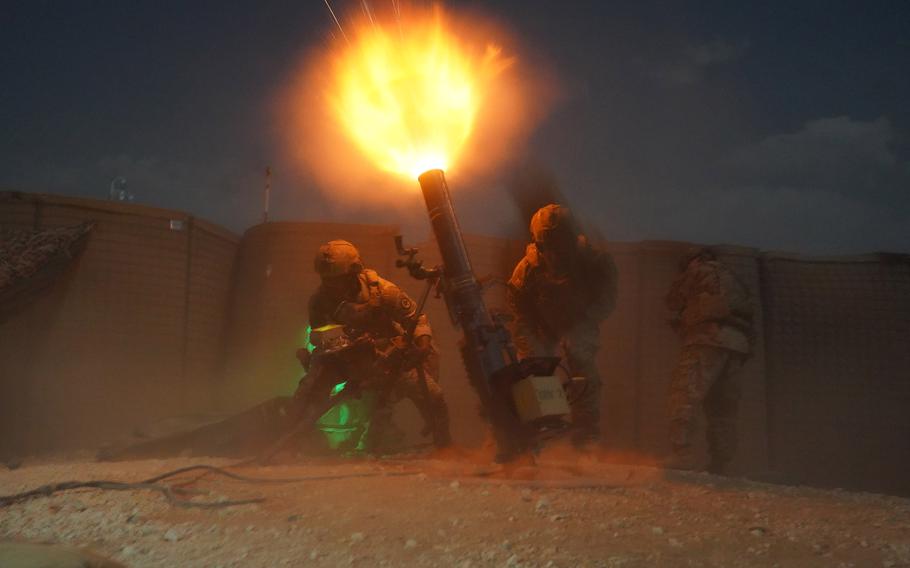
Soldiers assigned to the 44th Infantry Brigade of the New Jersey Army National Guard fire an M121 120 mm mortar system in northeastern Syria on Oct. 16, 2024. U.S. forces have come under attack by Iran-backed proxies in Syria more than 120 times in the past year. (Kyle Marr/U.S. Army)
CENTCOM seldom has announced the attacks or U.S. retaliation against the groups responsible for them. But earlier this month, the command revealed a series of recent U.S. retaliatory strikes against militia groups in Syria for attacks on American service members and facilities.
Those actions included a Nov. 12 strike targeting a weapons bunker and logistics headquarters of an unnamed Iranian-proxy group for an attack on U.S. and coalition forces at Patrol Base Shaddadi in northeastern Syria.
Last month, the command said the base at Shaddadi had been attacked 22 times since October 2023.
The militant attacks and U.S. response have followed a cyclical, tit-for-tat pattern, said Michael Knights, a senior fellow at the Washington Institute and expert on military and security affairs in Iran, Iraq and the Gulf states.
“For the third time this year, we’re probably in a cycle where (militant groups are) going to keep pushing the envelope,” Knights said. “And then we’re going to crack them a couple of times and then they’re going to stop again for a while. That’s where we are right now.”
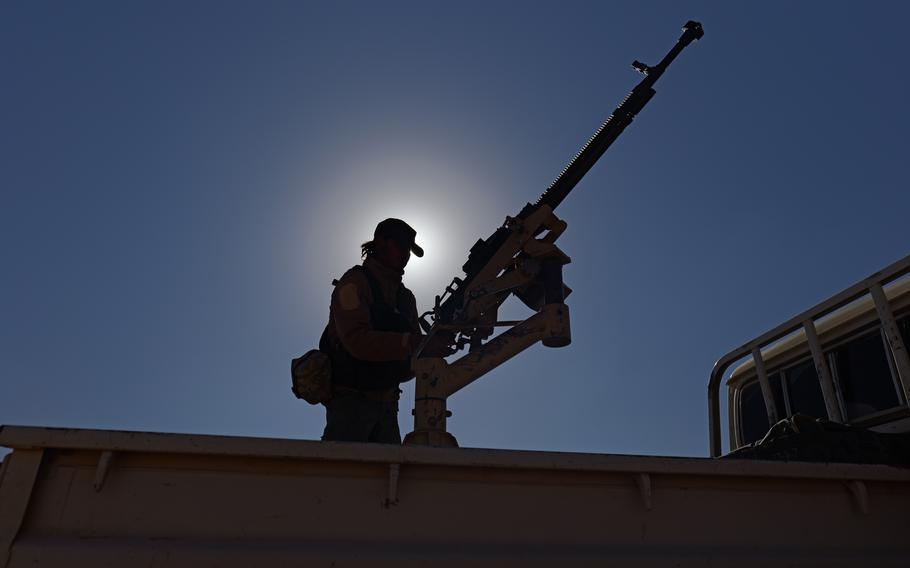
New Jersey Army National Guard soldiers assigned to the 44th Infantry Brigade prepare for an exercise alongside the Syrian Free Army in southern Syria on Oct. 27, 2024. The Syrian government has provided support to Iranian-backed militants attacking U.S. forces in the country, some analysts say. (Scott Maraldo/U.S. Army)